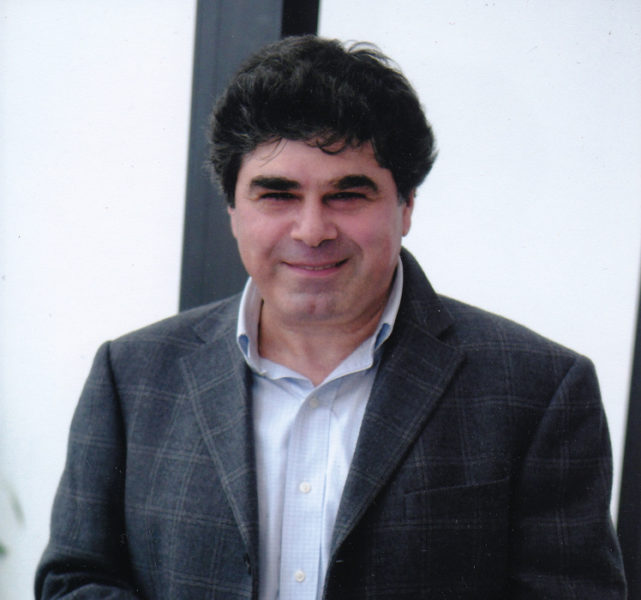
Leon Takhtajan is a Russian mathematical physicist, currently a professor of mathematics at Stony Brook University, New York, and a leading researcher at the Euler International Mathematical Institute, St. Petersburg, Russia. Takhtajan is a student of the great mathematical physicist, the late Ludwig Faddeev.In January 2017, Takhtajan was at the International Centre for Theoretical Sciences, Bangalore, where he spoke to the contributing editors of Bhāvanā on his work, his collaboration with Faddeev, and the renowned St. Petersburg mathematical school. He would like to dedicate this article to the memory of his teacher, who passed away just weeks after this interview.
Early Years
You were born in the city of Yerevan in present-day Armenia, which used to be part of the former USSR. Could you tell us a little about Armenia?
LT: Yes. Armenia is a great country whose history goes back to at least 12th century BC. I cannot tell you much about life in Armenia because I was born in Yerevan, but then our family moved to Leningrad when I was about two years old. My father was appointed a Dean of the Faculty of Biology at Leningrad State University. So I was born in Armenia and grew up in Leningrad.
Your father was the prominent botanist Armen Takhtajan. How much of an influence was your father on your early upbringing? Did his own work in science bias you favourably towards a career in science?
LT: Yes, he had a lot of influence, but rather indirectly. There was no direct influence like “you should do this, you should do that” or whatever, but it was the whole atmosphere. He worked on his research, writing papers and books, and at home we had a very good library with different kind of books, Also, he loved to listen to classical music. So the whole atmosphere was very culturally stimulating, but there were no instructions. For instance, my father never told me to choose a particular field of study. I was totally free to chose my career.

That’s wonderful. And what language did you speak at home?
LT: Russian. Russian is my mother tongue, though as a young child I spoke very simple Armenian.
On another note, your surname definitely sounds very Asian, perhaps even a little Persian. Does it actually mean something?
LT: It’s not very clear as it has different meanings. The physicist Cumrun Vafa, who is from Iran, told me that my name sounded strange in Persian because it translates to something like the “soul of the wood’’. Another translation is “Takhta’’—which means “wood’’ or “throne’’ in Persian—and “jan’’ is a term that you add to a name, like “Dear’’ in “Dear John’’. So “Takhtajan’’ could be either a carpenter or a man who sits on the throne.
Do you remember any particular incident from your childhood that got you excited about mathematics? William Thurston for instance, emulated Gauss very closely when asked to find the sum of the first N positive integers. Something similar in your own experience?
LT: Well, not really that spectacular like Gauss! [Laughs] It was more gradual. In Russia, the system was in three stages like everywhere—elementary school, middle school and then high school. I liked doing mathematics in elementary school and even in middle school. But later I read some old books from the beginning of the 20th century that were more philosophical, and I liked reading them. School mathematics was also very easy for me and I liked it. But it’s not like I made some discovery like Thurston. In high school, I participated in mathematics and physics olympiads. I was good at them but not that good because olympiad type of problems are quite different. Some people were really very good. I was kind of okay but nothing special.
How popular with you was Kvant the monthly magazine for students? Did you read it often?
LT: Well, actually, no. Kvant started being published in the 1970s I think, and at the time I had graduated from high school and was already at the university.
My father never told me to choose a particular field of study
You were already a little too old for it?
LT: Yeah, that’s right. I was too old for it.
Since you mentioned that your father had a good library at home, did you also read Russian literature?
LT: Yeah, well, basically I was brought up on classic Russian and Western (especially English) literature. [Nikolai] Gogol is my favourite writer. And of course the great authors like [Fyodor] Dostoyevsky as well.
Oh, fantastic. We used to read many Russian works which were translated into English and made available in India.
High Schools in the Soviet Union
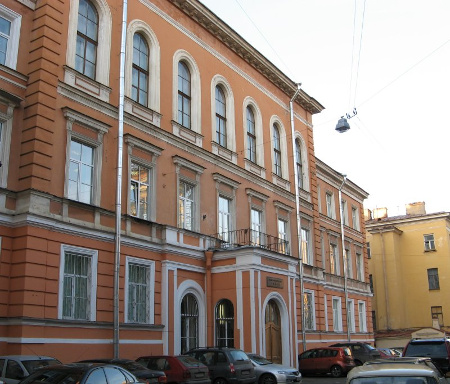
The great Russian mathematician Israel Gelfand is known to have personally identified and nurtured many precocious young mathematicians from high schools in the former USSR. When you were in high school, do you remember any such experience?
LT: Not quite. You see, I was in high school in Leningrad while Gelfand was in Moscow. But there was a different kind of connection. Gelfand was known in school, to my teachers. So if somebody was really good, then by word of mouth Gelfand knew. My high school, the famous School No. 239, was a specialized high school with an emphasis on physics and mathematics. Our physics teacher really had a great influence on me because he was not a regular teacher. He was actually a graduate student in physics at the university. He taught at our school for three or four years. It was really a great experience. I had never seen anyone like him before.
I’m sure you remember his name.
LT: Yes, I remember his name. His name is Alexandre Sergeivich Trochin.
So basically he was a graduate student…
LT: … at the university. I think he took a break and he worked as a teacher and then he went back, defended his dissertation and then became a professor at the Pedagogical University in Leningrad. It was for a short period of three or four years that he taught at my school. And it was amazing because he was not like an ordinary teacher. And he was maybe five or six years older than us.
So he could relate to you.
LT: Yes, but it was his style that was important.
What was his style like? Did he follow some sort of syllabus or was he just trying to infuse some enthusiasm?
LT: It was not like that. Somehow in the Soviet Union, math textbooks for high school were very good. But physics was horrible. In math books, even though it was elementary mathematics it could still be very good and very nicely written and you could go very far. In physics though, it is difficult to go far if you don’t know calculus. And then it becomes very primitive and becomes a lot of so-to-say applications, which made no sense. And it was really boring. I knew some calculus and he taught calculus maybe in a couple of days informally. He was teaching things from the first or second year of the university curriculum. This was really great. He was teaching classical mechanics and other things, and then later, electrodynamics.
How old were you when he first taught you?
LT: I started high school—at that time ninth and tenth year classes—at around 15 years of age. At that time, there were really very few good physics books. There was a famous book by [Yakov] Perelman—Physics for Entertainment—and it was really for entertainment purposes only.
What about the books by Landau and Lifschitz?
LT: Landau and Lifschitz came in the late 1940s and early 50s. But it was kind of very advanced. I wasn’t really reading it in high school. At that time I was reading another great book in physics. The author is [Cornelius] Lanczos and it was called The Variational Principles of Mechanics. This is a great book, a classic. I could probably understand half of it, but it’s a great book that influenced me the most.
Our physics teacher really had a great influence on me
By the way, I have seen Lanczos’ book because an English translation exists. When we were in school many of the Mir Publications books used to make it to India. Many Indians have got inspired by them. They were affordable.
LT: I was told about this by several people. That’s what they were saying. That it was almost universal.
Sergei Lando, a fellow Russian mathematician, talks about how four major Russian universities took the idea of identifying talent at the high school level so seriously that they established special boarding schools. Was it common to nurture such talent in your days too?
LT: Yes, exactly. They started a couple of years before I came to high school. There was a famous boarding school in Moscow that was organized by Andrey Kolmogorov.1 They were looking for kids everywhere in the Soviet Union, except Moscow. If you lived in Moscow, you were not supposed to go to the boarding school. But they invited people from other cities, even villages, and they looked for very talented kids. In Leningrad too, there was a very good boarding school. Again, not for kids who lived in Leningrad but around Leningrad in the northern regions.
So they kind of divided the country into two parts—nonequal parts—and it was very effective. They identified kids through olympiads first at the local level, and then at the state and national levels. It was extremely well organized.
And Kolmogorov himself was in charge of that?
LT: Yes, he was in charge and he was actually teaching at the boarding school called Internat. It was called Kolmogorov Internat. “Internat’’ means boarding school in Russian. It was also in St. Petersburg. Today, though, the selection is not as efficient as in the old days.
While you were in high school and while you were being taught by this graduate student of physics, was it the first time it occurred to you that you actually had a flair for mathematical thinking? Or did it occur much later?
LT: I was in the middle school when I realized I like to study mathematics. It was easy, it was nice and I had kind of a feeling to it.
A talent to it?
LT: No, not talent. There’s a special talent to solve olympiad problems which I did not have. I can solve some of them. But it’s like a competition, like Olympics, because there is a time limit —six problems in three hours—and they can be very unusual.
After graduating from high school, I wanted to go to the university to study mathematics, but then I was debating whether to go to Leningrad University to study mathematics or to study physics in Moscow where there’s a famous Physical-Technical institute.
Is that the same as the Landau Institute for Theoretical Physics?
LT: Landau Institute for Theoretical Physics is a research institute which is affiliated with it. All people at Landau Institute came from Moscow Physical Technical University, called PhysTech. It was famous and I was thinking of going there but then I decided against it.
Were any of your siblings also with you on this academic journey? Any of your brothers or sisters also became professors, physicists, mathematicians?
LT: Well, my brother is a professor of humanities. He studies classic philosophy and history—ancient Greece, Rome—he is a classicist.
Is he in Russia?
LT: He is in Russia. I also have a sister; she studied biology at the university.
The Steklov Institute
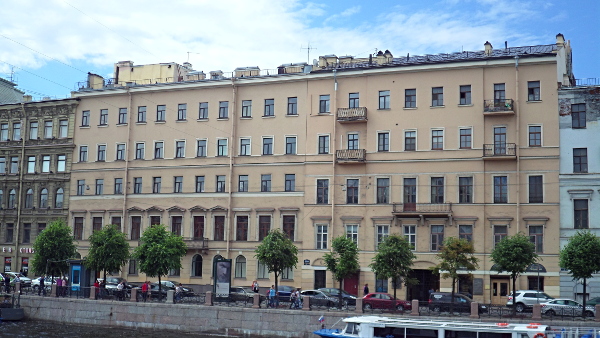
The Steklov Institute is a legendary school known across the world for its work, its graduates and its faculty. Though we are very curious to know more about Steklov and other great institutes of the former USSR, very little is available by way of easily accessible information. Could you please tell us about the Steklov Institute?
LT: The Steklov Institute is part of the Academy of Sciences. It’s not a university like Moscow State University, or Leningrad (now St. Petersburg) State University. The Steklov is a research institute within the Academy of Sciences. They have only graduate schools so you can be admitted as a graduate student for your Ph.D. The institute is named after V.A. Steklov. He founded the Institute of Physics and Mathematics in Leningrad in 1919. This institute was divided into separate parts for physics and mathematics in 1934. What became the Steklov Institute was the mathematical part; and it was moved to Moscow, with a branch in Leningrad. Nowadays the Leningrad branch is independent, so now there are two Steklov Institutes—one in Moscow and one in St. Petersburg.
Did mathematicians move between the two places?
LT: In the 1960s, if you were a researcher in the Academy of Sciences, you were also allowed to have a position at a university to teach. This is what people like Igor Shafarevich, Yuri Manin and many others were doing. But later, in the 1970s, this was abandoned. The times were not that great. For instance, if you were at Steklov, you couldn’t teach at the university but you were permitted to take students who had graduated from the university. Everybody at the university had an advisor for their diploma. You needed to write a small paper like a project, which should be kind of…
Expository?
LT: Not really, it should be a small piece of research. It could be expository but then you would not get a good grade. Everybody was supposed to write a diploma thesis, which was like Master’s thesis. And so everybody had an advisor. And then it depended on the advisor and on your performance. If the advisor thought that a student was good, then the student was recommended for graduate studies. You could not apply to graduate school—you had to be recommended. So it wasn’t like in the U.S. where you just send applications to different graduate schools and people don’t know you and just look at your file and recommendation letters. Here, the professor knew you and there was a committee which recommended you. And then once you’re recommended, there were certain restrictions—the university should approve it and then you had to pass exams. You became a graduate student with your diploma advisor as your dissertation advisor only after you passed these entrance exams. Steklov was getting the best students both in Moscow and Leningrad.
Is this the same system even now?
LT: Now I think it is similar but the thing is there are much fewer students and that is a major problem; less and less students want to do science, mathematics and physics in particular. Maybe some of them would go to computer science. Of course, they are thinking ahead to their future jobs and so there are very few students who want to stay in academia. It also depends on the institution, but still it is not the way it used to be in the USSR. That’s the major problem with science in Russia today.
Steklov was getting the best students both in Moscow and Leningrad
Is it also that many of the students go abroad to study?
LT: Yes. You see, when nowadays you graduate from university in Russia, you can do two things. If you are good, your advisor can ask you to become his graduate student, but you can also apply to schools abroad. I don’t know the statistics but I can say that very good students prefer to study at very good schools in America. MIT, Princeton… that’s what they like.
In India too students like to go to similar places.
LT: But amazingly in India, many of its very good people come back. Russia is a slightly different story.
This question is a little away from mathematics and more about the cultural situation that existed in the USSR. There were many unspoken but tacitly acknowledged biases and prejudices that affected certain people. Were you at any point a victim of such circumstances?
LT: Not really. I was kind of lucky. Of course, there were different prejudices and biases, which are well documented.
Meeting Ludwig Faddeev
When did you first meet Professor Ludwig Faddeev?2 When did you decide to work with him? And also was it your choice to work with Faddeev or was it his choice? Did his work appeal to you?
LT: Yes, you see it is very interesting because when I was in high school my physics teacher said—we were discussing classical mechanics—that “You know, there is a famous three-body problem which Poincaré was trying to solve but couldn’t because it’s not so easy.” But then he said “There is a young professor, Ludwig Faddeev, who solved the quantum three-body problem.” So I knew his name, which I then forgot but perhaps it was at the back of my mind. And then I came to university…
Which year did you enter university?
LT: It was in 1967. When you entered, it was not like in the U.S.; in the Soviet Union and now in Russia there is a standard sequence of classes you need to take, from the first year to the fifth year. But in addition, you can audit or take courses in other topics and you can pass those exams on top of your regular schedule. I think when I was in the second year I took a course with professor Mikhail Solomyak, a well-known mathematician working on the theory of operators in Hilbert spaces. And I liked the material. After the exam he asked me “What would you like to do?” and I said “Maybe I would like to use this material to understand some quantum physics and theoretical physics.” He replied, “Then you should go to Faddeev. I’ll tell him about you.” And then I went to Faddeev’s lectures with my good friend, Alexei Reyman. But this was before our regular schedule because Faddeev’s course need to be taken in the fourth year, and we were only in our second year. But we attended his lectures, passed the exam and then we asked him “Could you take us as students for diploma?” Then Faddeev said “Okay. Attend my seminar. Read this and that”; and so we started.
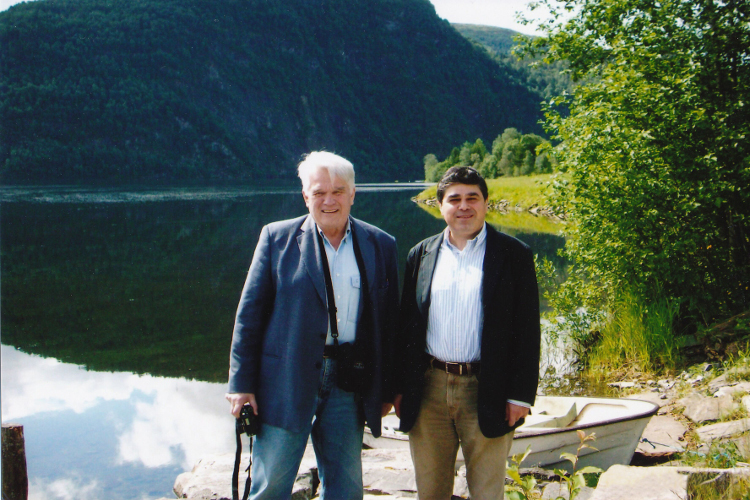
What were the kinds of problems that Faddeev was interested in, especially in the early 1970s when you really started working at Steklov?
LT: When we were students Faddeev gave us what we thought at that time was a very strange problem—to prove the uniqueness of quantum mechanics! At that time we—my friend Alexey Reyman and I—knew very little of homological algebra, which was required to understand the problem. Actually Faddeev was ahead of the times, since what he actually meant was a deformation quantization, which was formulated in a seminal paper3 by F. Bayen, M. Flato, C. Fronsdal, A. Lichnerowicz and D. Stenheimer only in 1978. Much later, in 1997, M. Kontsevich proved that deformation quantization exists for any Poisson manifold. What Faddeev asked us to do was to prove the uniqueness of deformation quantization for \mathbb{R}^{2n} with canonical symplectic form.
And then we asked “Can you give us some other problem?” [laughs]. I remember I was riding a bus with a friend who was senior to me and I told him “This was the problem Faddeev gave me”, and I remember he told me “Now, you see, you should work on these problems when you are old. Not in your first year.”
Were you impressed with the kind of work Faddeev was already doing?
LT: Yes, because when I asked him for another problem I was very lucky. At that time Faddeev and Zakharov wrote a famous paper4 about the complete integrability of the Korteweg-de Vries equation. I must have been in my fourth year because the paper appeared in 1971 though it was written in the winter of 1971. I remember that he gave me a carbon copy. At that time you had a typewriter that produced five copies and then, using a carbon paper, the author puts formulas by hand. Faddeev gave me maybe the fourth or fifth copy but I could still read the formulas.
When we were students Faddeev gave us what we thought was a very strange problem—to prove the uniqueness of quantum mechanics!
In the beginning I understood very little. But then he told me “Just go and read these papers.” He didn’t teach me in terms of explaining things with all the details; rather he would refer to the papers one needs to read. He also gave me a preprint of a paper5 which later became a famous work by Zakharov and Shabat on the solution of the nonlinear Schrödinger equation by the inverse scattering method. At the same time, Faddeev posed me the problem of proving the complete integrability of the nonlinear Schrödinger equation, which I did for my diploma thesis. It was published in 1973.6 Next, he asked me to solve the sine-Gordon equation by the inverse scattering method. I found the Lax pair for it (in light cone coordinates) in 1973, but the paper7 took a long time to get published in a major physics journal in the USSR.
Oh, wow.
LT: This was the first time that I really felt like I can do non-trivial computation and learn many things needed for it. Our mathematics education at the university was good but it was very general. If you tried to do more specific work, you realized that you know very little. So you need to know more by yourself. That’s how I started to work with Faddeev. Once I solved this, he said “Okay, you should come to graduate school.” But instead of graduate school, he took me and my friend Alexei Reyman, who worked in representation theory, as junior researchers in Steklov. Basically there were two options: you could be a graduate student, but since Faddeev was working at Steklov, he took us as entry-level researchers, which allowed us to work on a Ph.D. Effectively it was like graduate school but we were low-level or entry-level researchers.
Faddeev’s Work On Integrability and Scattering
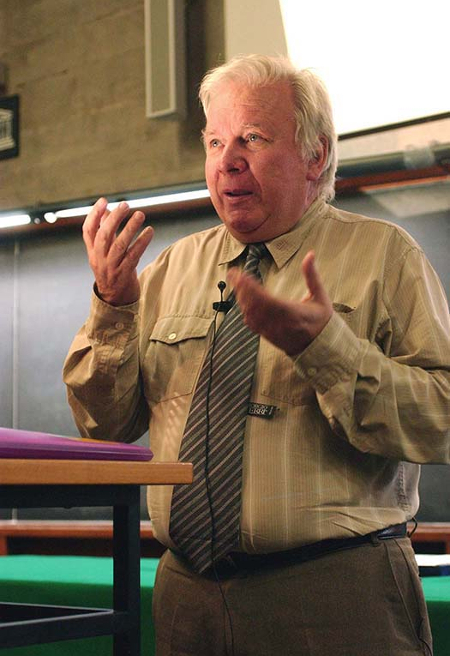
So, broadly, Professor Faddeev was looking at scattering you could say?
LT: At that time, yes. It’s an interesting story because in his 1959 Ph.D. thesis he solved the inverse scattering problem for Schrödinger equation on the line, which was a problem in scattering theory. When the inverse scattering method for solving nonlinear evolution equations was developed, it was based on inverse problems like this one. Thus Faddeev was using the things for solving new problems, so this was a great opportunity for him. His paper with Zakharov on complete integrability of the KdV equation was amazing because the various topics he knew separately were combined together in a beautiful way.
Could you tell us more about Faddeev’s work on quantum inverse scattering?
LT: After the classic paper by Faddeev and Zakharov, Faddeev and I worked on using the inverse scattering to solve other classical systems. The most famous one was the sine-Gordon equation; Faddeev and I proved its complete integrability in 1973. This equation is very interesting because it is really a model where a classical nonlinear self-interaction produces several sorts of particles. Usually in the linear theory like the Klein-Gordon equation there is just one sort of particle which corresponds to the field. But in the sine-Gordon equation, in addition to the regular particles there are solitons and breathers or double solitons. I remember Faddeev told me that it was Einstein’s dream to have several particles coming from the self-interaction of a single field. This meant that the field had to be nonlinear so that it interacts with itself and creates several particles and not one. Einstein’s dream was not realized—in the standard model [of particle physics], each particle has a separate field. But it was realized in the sine-Gordon model, which of course is a toy example of (1 + 1)-dimensional physical theory, which Faddeev and I solved in 1973.
The next problem was to solve the corresponding quantum field theory. So our work with Faddeev on quantum inverse scattering method started with a clear goal to completely quantize the sine-Gordon equation.
The semi-classical quantization of the sine-Gordon model was done by Faddeev and Korepin in the USSR, and by other groups in the U.S. Then Zamolodchikov computed the S-matrix. Since there existed a classical inverse scattering method, it was natural to think about its quantum version. One of the key ideas came from reading Baxter’s papers, which go back to 1970–73. We didn’t know about them at first, but somehow it became clear in the late 1970s that Baxter’s papers contain an important ingredient, the so-called quantum R-matrix. First, Evgeny Sklyanin solved the quantum nonlinear Schrödinger equation and then in our joint paper with Sklyanin we solved the quantum sine-Gordon model—we formulated quantum inverse scattering method and for the sine-Gordon model computed explicitly its spectrum and S-matrices. In another paper, Faddeev and I coined the term Yang-Baxter equation for the equation that quantum R-matrix satisfies.
Faddeev’s paper with Zakharov on complete integrability of the KdV equation was amazing
Could you tell us what is scattering and why we should study it? As I understand it, there are two approaches to scattering. One is a direct problem and then there is the inverse problem.
LT: Right. You see, we observe scattering all the time, like the scattering of light, which are electromagnetic waves; this is a direct problem. Examples of the inverse problem can be found in geophysics when you search, say, for oil by measuring seismic waves and then trying to determine what is the structure underneath the surface. This is the inverse problem in geophysics, a version of the inverse scattering problem.
Does the theory of scattering lead us to a deeper principle? Are we correct in saying that very broadly, all natural phenomena belong either to the class of systems for which exact and closed form solutions are available or to the class for which exact closed form analytical solutions can never be found?
LT: Well, you see, a problem can have different phases. In one phase, it could be integrable and then in another phase it can become chaotic or partially integrable—some degrees of freedom that you can integrate out and other degrees will become chaotic. So it’s a mixture, it’s not like a wall between the two.
It’s more like a continuum, with completely integrable at one extreme end and completely chaotic at the other end?
LT: Yes.
Generally, is it true that as the number of mutually interacting sub-systems in a system increases, it somehow tends to become chaotic?
LT: It depends. If you have systems with a large number of particles like in statistical physics then you describe them differently with fewer equations, which is rather nice. Because you are not looking at individual interactions but you are looking at some average. For example, in a theory of gases or in statistical mechanics when you have, say, 10^{24} particles, then you use different methods to get clean equations like the Boltzmann equation. This is a different description and then you can say a lot rigorously and completely. But if you look inside at the individual particles, it is a total mess.
Is the solar system an example of a chaotic system?
LT: Well, it is a famous problem in celestial mechanics to prove the stability of the solar system. That’s what Laplace and Poincaré were trying to prove. But in general the three-body problem should be chaotic somehow. That’s what people say.
That’s what I wanted to ask. In general, is the N-body problem more likely to be chaotic than integrable?
LT: Yes, of course. Because it is known that for the general case of a three-body problem there are no extra integrals of motion. That’s a theorem, I think.
From the Two-Body Problem to Quantum Groups
Integrability has a long history. Newton is supposed to have said that a two-body problem like the Earth–Sun problem can be solved but he would get a headache if you brought the moon into the picture. Could you summarize the developments in multi-body dynamics? For instance, what did Euler and Lagrange do that Newton hadn’t thought of? And what did Jacobi add to it?
LT: Newton invented calculus and he solved the two-body problem, a great achievement. But then people were trying to push it further by analyzing the movements of planets, finding corrections to the orbits to justify all the observational data. Then, Lagrange and Euler solved another equally important problem, that of the rotational motion of a rigid body in a gravitational field. They were using elliptic functions and Euler was the first to apply elliptic integrals to understand this problem. Then Jacobi developed the whole theory of elliptic functions and people were fascinated by it because one could use them to solve more problems in classical mechanics. They were not necessarily many-particle problems but rather few-particle problems that were still very difficult, like the motion on an ellipsoid solved by Jacobi.
The next development came with Riemann, when he considered theta functions of arbitrary genus, with elliptic functions corresponding to genus one, like a surface of a torus. He considered higher genus surfaces, like a sphere with several handles attached, and developed the general theory of theta-functions. These functions, together with the Abel–Jacobi map, allowed us to solve other differential equations. Thus in her famous solution of the equations of the rigid body in a gravitational field, Sofia Kovalevskaya was using genus-two theta-functions. One should of course mention Poincaré’s work on the three-body problem. Paul Painlevé was the first to consider general nonlinear ordinary differential equations. He developed what is now called the Painlevé test, which, when applied to the second-order equations, classifies all “good’’ ones. The idea of such a test was first proposed by Kovalevskaya and used in her famous paper.
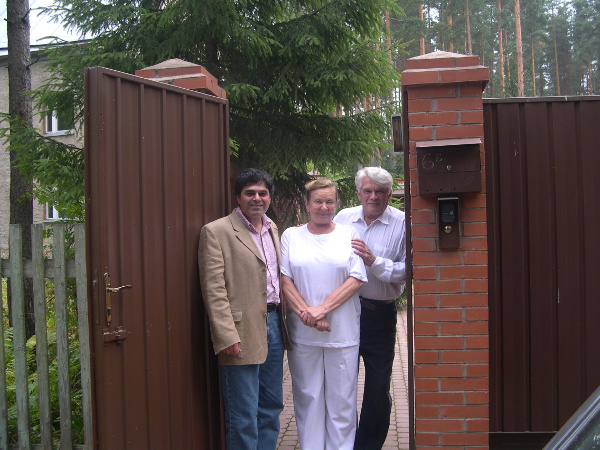
All this development was dealing with ordinary differential equations. Starting from the Maxwell’s equations, partial differential equations become very important for problems in classical field theory and many other areas. Then Diederik Korteweg and Gustav de Vries discovered the now famous KdV equation, a special nonlinear partial differential equation. It describes shallow waves on the water and has applications in plasma physics. So this is another development, when from a few-body problem you pass to the system with infinitely many degrees of freedom.
Another example is the nonlinear classical Heisenberg ferromagnet, for which I found the Lax pair, and its quantum analog, the Heisenberg spin chain. These systems are completely integrable with one-dimensional space variable. Actually Fermi-Pasta-Ulam discovered that there are many-body problems that you can solve, but they are not in three-dimensional space and are instead on a line or on a circle. They did numerical experiments and then Morikazu Toda wrote down equations for the N-body problem that is completely solvable for any N, as it was shown by S.V. Manakov and H. Flaschka. There are other examples of this type like Calogero-Moser system, etc. It is a great development, but there is a price you pay—all these systems are one-dimensional. So they can be used as models for some rather special physical phenomena when you have very thin and narrow fields or something of this sort.
Quantum wires maybe?
LT: Yes, exactly, but they do not correspond to fundamental physical systems in the 3-space. But this development gave rise to new mathematical disciplines. First there was a discovery by Gardner, Greene, Kruskal, Miura and Zabusky that the KdV equation can be solved by the inverse scattering problem for the Schrödinger equation. Lax explained their results by introducing the notion of a Lax pair. Then Faddeev and Zakharov proved that the KdV equation is a completely integrable Hamiltonian system. This led to the formulation of the inverse scattering method, which was applied to many systems including the nonlinear Schrödinger equation, sine-Gordon equation, the Toda lattice equations, the Heisenberg ferromagnet, etc. All these systems were considered on the infinite interval with rapid decay boundary conditions at infinity. But for a problem on a finite interval with periodic boundary conditions (periodic problem) the tools for analyzing the corresponding Lax pair are totally different. Thus Sergei Novikov solved the periodic problem for the KdV equation using tools from algebraic geometry, where the Abel–Jacobi map and theta functions play a fundamental role. So this is another development. And then from the quantum inverse scattering method, the notion of a quantum group actually appeared. The first example of a quantum group was in our paper with Faddeev in 1984; P.P. Kulish and N. Reshetikhin gave the first example of a quantized universal enveloping algebra. Based on these examples, V. Drinfeld and M. Jimbo developed the theory of quantum groups. Another application is the theory of knot invariants. Though Vaughan Jones didn’t use quantum groups for the construction of his knot invariant, it can be explained in terms of quantum groups very nicely.
The first example of a quantum group was in our paper with Faddeev in 1984
How is a quantum group different from a classical group? And how does classical integrability differ from quantum integrability?
LT: You see, quantum group may not be the right term because it is not a group. By a group we mean a set with multiplication and inverse operations, but a quantum group is a special deformation of the algebra of functions on a group. In addition to being a commutative algebra under the point-wise multiplication of functions, this algebra carries a structure of a Hopf algebra. Corresponding additional operations, co-product and antipode, arise from group multiplication and inverse operations. A quantum group is a special one-parameter deformation of the Hopf algebra of functions on a group that preserves the co-product. The deformation parameter is usually denoted by \hbar and it often plays the role of the Planck’s constant. When this parameter goes to zero, the quantum group turns into the algebra of functions on an ordinary group. It’s like quantum mechanics, where quantization in some precise sense is a deformation of the algebra of classical observables.
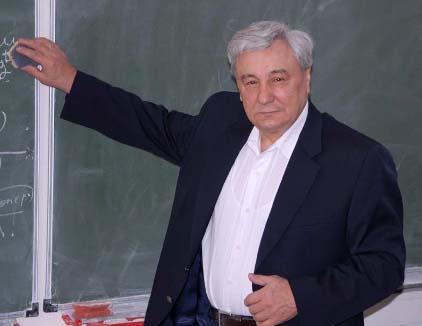
How much of an overlap exists between the two great Soviet contributions to integrability—one led by Faddeev in the St. Petersburg school and the other by Novikov and his collaborators? Are they completely disjoint or are there are some overlaps?
LT: There are of course some overlaps but from the very beginning these two groups were working on different problems. Novikov’s school was mainly working on periodic problems, while in Leningrad we were mainly working on quantum integrable models with applications to quantum field theory, two-dimensional statistical mechanics, one-dimensional spin chains, quantum groups and other related things.
At the 1983 ICM in Warsaw, Poland
Your own work was recognized by the global mathematical community with an invitation to speak at the International Congress of Mathematicians (ICM) in Warsaw in 1983.
LT: Yes, it was my work on classical and quantum integrable systems so this invitation was kind of routine. But I was working on other things as well. And classical and quantum integrable systems is one area where I have actually not worked for many years now.
There are of course mathematicians who basically work in the same field all their life. I remember Faddeev saying that one needs to change the field every five or seven years. It need not be a complete change, but it should give you the time to get your mind fresh and then you may come back. How you change fields is another story. But there is some path; it is not completely random. Of course, it doesn’t mean that you have to completely leave it, although there are some mathematicians I know who change fields and don’t come back—like John Milnor, who is my colleague at Stony Brook. He was working in topology, then in algebra, in general relativity and now he works in complex dynamics. And in each of the areas he has made fundamental contributions.
ICM 1983 was a break from the past, in a way. For instance, in 1970, Sergei Novikov was awarded the Fields Medal but he was not allowed to go to Nice. In 1978, Gregory Margulis could not go to Helsinki. But 300 Soviet mathematicians went to Warsaw in 1983. Your thoughts on what must have been a memorable trip.
LT: It was very interesting because there are several thousand people attending the ICM. It maybe too many people now but the advantage, especially for young people, is that you can meet, listen to lectures and maybe talk to the people whom you know only from papers or books. This was a great experience.
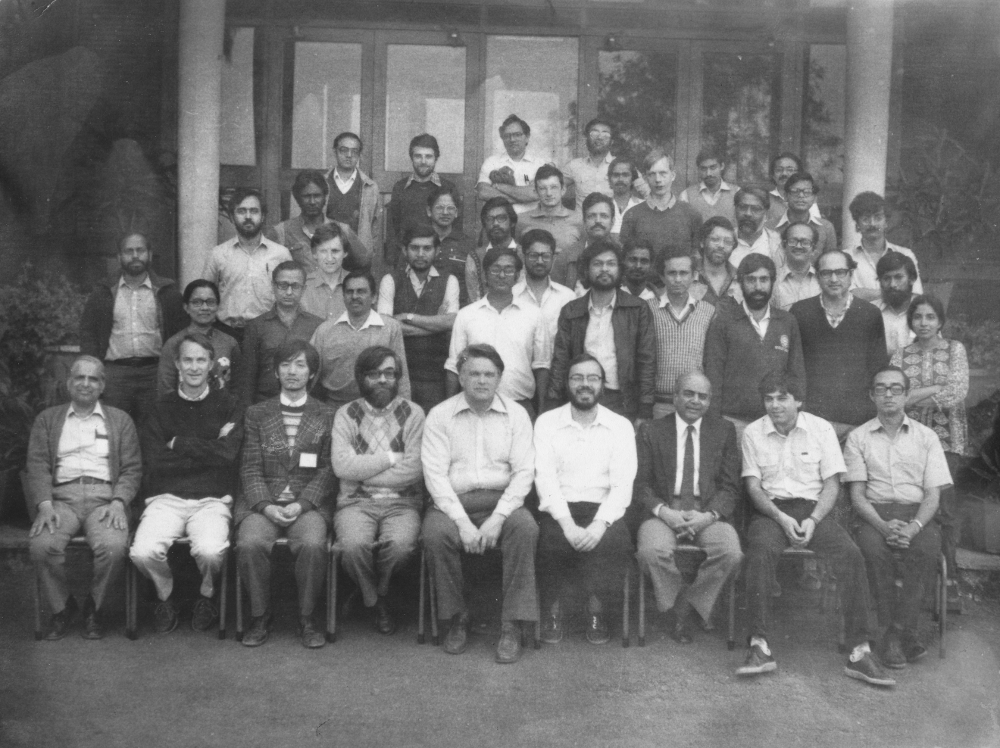
And this was your first trip outside Communist USSR?
LT: It was.
Meeting mathematicians from across the world must have been an exhilarating experience. At the same time, did it suggest to you that maybe if things ever changed, you could entertain the possibility of working outside the USSR? Did it occur to you then?
LT: Not really. You see, the idea was it would be nice to go to some conferences to spend some time talking to people, maybe working for a month or so. But that idea [of leaving] didn’t come to me. Of course, at that time some Soviet mathematicians had emigrated to Israel or to the USA. But this idea didn’t come to me then. It came to me only when the Soviet Union collapsed and it became clear that it was almost impossible to do mathematics there.
I remember that Gregory Margulis visited India, in 1989 I think. He came from an institute called The Institute for Information Transmission Problems or something like that.
LT: Right. [Laughs] It’s a big name for an institute, right?
And many of the books on mechanics that I studied were written by excellent physicists; and when I looked at their affiliation, I was surprised to see institutions like the Odessa Institute of Shipbuilding. Did those institutions actually exist?
LT: Yes. It is now in Ukraine and it is called the Admiral Makarov National University of Shipbuilding. In Soviet times, the quality of mathematics was so high that besides the universities there were many more higher education institutions where very good mathematicians and physicists were teaching and doing research.
I remember Faddeev saying that one needs to change the field every five or seven years
You left the USSR in 1990. Any reason you chose Stony Brook ahead of others? Were you influenced by the presence there of James Simons and C.N. Yang?
LT: Yes, though Simons actually left in 1978. The State University of New York moved to the Stony Brook campus in 1962 and started to build a first-class research university. Simons was the chairman of Mathematics Department from 1968 to 1978 and he built it to today’s prominence. In particular, he brought to Stony Brook such well-known geometers as Jeff Cheeger, Detlef Gromoll, Mikhail Gromov, Herbert Lawson and others. Simons left academia in 1978, but in 2009 he joined our department as research professor. When I came, C.N. Yang was a director of the Institute for Theoretical Physics in Stony Brook (now C.N. Yang Institute), and this was the main attraction.
At the Interface of Mathematics and Physics
Your own work in the last many decades has looked at problems not only in mathematical physics but also in number theory, algebraic geometry and algebraic topology. Is there a single underlying theme on which your mathematical instincts are built?
LT: Yes, probably, but it is very difficult to formulate it. Probably, there is one. And this is rather subconscious. You don’t really know why you do this or do that. I believe you should think of some very difficult big problem, which could lead you to a collection of related problems you can solve.
I was going through your work, starting from the very early 1970s. Your first few publications were of course in inverse scattering and allied areas. But almost simultaneously, in collaboration with Askold Ivanovich Vinogradov, you were also looking at problems in number theory. So you have, right from your very early days, had your feet in multiple areas.
LT: Vinogradov is my second teacher. You see, at the university, we were studying mathematics in general, with few examples. I remember reading Novikov’s paper on the periodic problem for the KdV equation where, in particular, he was using elliptic functions. We never studied elliptic functions at the university; they were not a part of the standard curriculum! So I was reading Siegel’s book on elliptic functions and was quite fascinated about them and their applications to number theory. This is how I met A.I. Vinogradov, who became my second teacher in number theory.
How do physicists make jumps in their imagination or their logical thinking, when they are also firmly rooted in mathematical thought? Your mathematical soul tells you that that logical jump might not be justified but your physical soul pushes you to do that. How does this happen?
LT: Mathematicians don’t understand, right? They will say it’s not mathematics. You see, for physicists, mathematics is just a language. And you can use a language any way you like. Physicists have certain ideas, which are expressed in mathematical terms. Then they do some computations that, of course, should be correct. For example, you do a computation in a physics theory that is valid for the small values of some parameters. If you know, from physics argument, that this theory is equivalent to another theory with large values of parameters, you get a result for this theory, a certain formula. But the way of deriving it is not mathematical.
Vinogradov was like a second teacher
To put it another way, you write a formula that you derive by comparing two different theories. Say using mirror symmetry, duality or AdS/CFT. As the result, you get a formula involving mathematical objects where the left hand side equals the right hand side. But physicists do not derive them in the same way as mathematicians. For instance, consider formulas for the Gopakumar–Vafa invariants that count BPS states on Calabi–Yau manifolds. The formulas feel right—and they are beautiful formulas—but they are not proven from a mathematician’s point of view. But these formulas are absolutely correct. So there is some magic going on. But there is no mathematical proof, which could be very long and elaborate, with many technical details, as it often happens. However, one could think that, maybe, physics proofs have more power when you compare various dualities between physical models. They are not rigorous but sometimes physicists have some simple examples where they can check that both sides are indeed equal. And when they cannot check, they say that there are some other indications that show that this should be the case. And then you use it and get these beautiful results.
So is it a fair statement to make that physicists have a higher risk appetite than mathematicians—that they are prepared to stick out their necks and say things that they may not be able to prove, something a mathematician wouldn’t do?
LT: You see, physicists don’t need to prove. They need to compute and get the formulas. Once you have a formula, then you can make a prediction that you believe is correct. That is sufficient.
And physics still has experiment.
LT: Right.
Since you brought up the idea of Gopakumar–Vafa invariants, does your work have implications to topological strings?
LT: Not really, no. There are some very interesting quantum mechanical integrable models that came from topological strings. I am interested in them and actually I have one recent paper on this subject, joint with Laptev and Schimmer. But I like to understand better what these beautiful formulas mean from mathematics point of view because so far they are obtained from physics point of view.
We hear that knot invariants and topological invariants are all related to quantum groups. And you spoke earlier about quantum groups. In a humorous context, some people say that in the ICM held in 1990, there were four Fields medalists. Three of them were quantum Fields, one was classical Fields!
LT: [Laughs] Yes, yes. That is absolutely correct! They were quantum Fields medals.
Thank you for your time.
LT: It was nice talking to you, yeah.
acknowledgment Bhāvanā would like to acknowledge Prof. Rukmini Dey and Mr. Irshad for their help in organizing this interview at the International Centre for Theoretical Sciences, Bengaluru.
Footnotes
- Andrey Kolmogorov appears on the back cover of this issue of Bhāvanā. ↩
- Ludwig Faddeev passed away on 26 February 2017. ↩
- F. Bayen, M. Flato, C. Fronsdal, A. Lichnerowicz, D. Stenheimer. Deformation Theory and Quantization. I. Deformations of Symplectic Structures. Ann. Phys. 1978. 111:61–110. doi 10.1016/0003-4916(78)90224-5. ↩
- V.E. Zakharov and L.D. Faddeev. Korteweg-de Vries Equation: A Completely Integrable Hamiltonian System. Funct. Anal. Its. Appl. 1971. 5(4):280–287. doi 10.1007/BF01086739. ↩
- V.E. Zakharov, A.B. Shabat. Exact Theory of Two-Dimensional Self-Focusing and One-Dimensional Self-Modulation of Waves in Nonlinear Media. Eksper. Teoret. Fiz. 1971. 61(1):118–134; English: Sov. Phys.- JETP. 1972. 34(1):62–69. ↩
- L.A. Takhtadzhyan. Hamiltonian Systems Connected with the Dirac Equation. J. Math. Sci. 1977. 8(2):219–228. doi 10.1007/BF01084958. ↩
- L.A. Takhtadzhyan. Exact Theory of Propagation of Ultrashort Optical Pulses in Two-Level Media. Zh. Eksp. Teor. Fiz. 1974. 66:476–489; English: Sov. Phys.-JETP. 1974. 39(2):228–233. ↩
